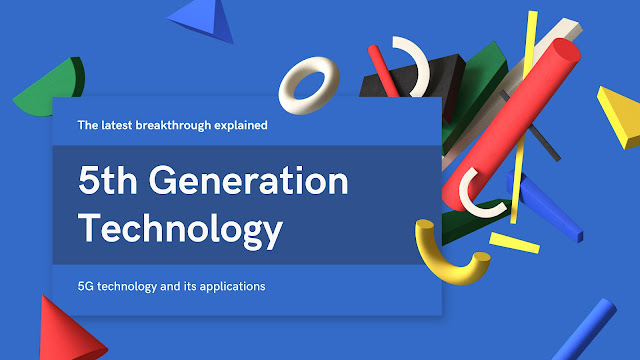
Introduction
5G technology is the latest generation of wireless technology that promises to revolutionize the way we connect to the internet and communicate with one another. 5G stands for "fifth generation" and it is designed to be faster, more reliable, and more efficient than previous generations of wireless technology. With 5G, users can expect faster download and upload speeds, lower latency, and improved capacity, which can enable a wide range of new applications and services.
5G technology operates on a higher frequency than previous generations of wireless technology, which allows for faster data transmission and more capacity. This means that 5G can support more devices and users at once, making it possible to connect more devices to the internet and enable new applications and services. With 5G, users can expect faster streaming of video and music, better gaming experiences, and improved virtual and augmented reality applications.
In addition to faster speeds and improved capacity, 5G technology also has a low latency, which means that the time it takes for data to travel from one point to another is significantly reduced. This can enable new applications such as remote surgery, autonomous vehicles, and industrial automation. 5G also has the ability to support massive machine-type communications, which can enable the Internet of Things (IoT) applications such as smart cities, smart homes, and industrial IoT.
Another important aspect of 5G technology is its ability to support new business models, such as network slicing and edge computing. Network slicing allows for the creation of multiple virtual networks on top of a single physical infrastructure, which can be tailored to specific use cases and customer needs. Edge computing, on the other hand, allows for data processing to be done closer to the source, which can reduce latency and improve security.
In conclusion, 5G technology is the latest generation of wireless technology that promises to revolutionize the way we connect to the internet and communicate with one another. With 5G, users can expect faster download and upload speeds, lower latency, and improved capacity, which can enable a wide range of new applications and services, from faster streaming to virtual reality and autonomous vehicles, as well as support new business models such as network slicing and edge.
Applications of 5g technology upsc
5G technology has the potential to revolutionize a wide range of industries and applications, particularly in the field of telecommunications. One of the key applications of 5G technology in the field of telecommunications is the support for massive machine-type communications, which can enable the Internet of Things (IoT) applications such as smart cities, smart homes, and industrial IoT. This can be used for example, in the field of agriculture, where 5G networks can be used to connect field equipment, sensors, and monitoring systems, which can help farmers to improve crop yields and reduce costs.
Another important application of 5G technology is in the field of healthcare, where 5G networks can be used to support telemedicine and remote healthcare services. With 5G, doctors and healthcare professionals can remotely monitor patients, perform virtual consultations, and even perform remote surgeries. This can greatly improve the accessibility and quality of healthcare services in rural and remote areas.
5G technology also has the potential to revolutionize the field of transportation, particularly with the development of autonomous vehicles. With low latency and high-speed connectivity, 5G networks can enable vehicles to communicate with each other and with infrastructure, which can improve safety and traffic flow. It can also be used to support V2X (vehicle to everything) communication which can improve the efficiency of traffic management and help reduce congestion on roads.
In addition, 5G technology can be used to support the field of education by providing high-speed and low-latency connectivity to remote and rural areas. This can help to bridge the digital divide and provide students in remote areas with access to the same educational resources and opportunities as those in urban areas.
Conclusion,
5G technology has the potential to revolutionize a wide
range of industries and applications, particularly in the field of
telecommunications. From agriculture and healthcare to transportation and
education, 5G networks can be used to improve efficiency, reduce costs, and
increase access to services and resources. This can be a powerful tool for the
government to improve the accessibility and quality of services for its
citizens in an efficient and cost-effective way.






